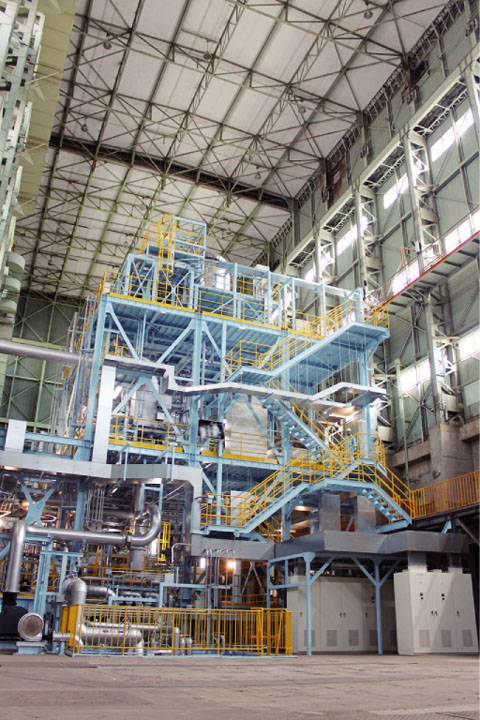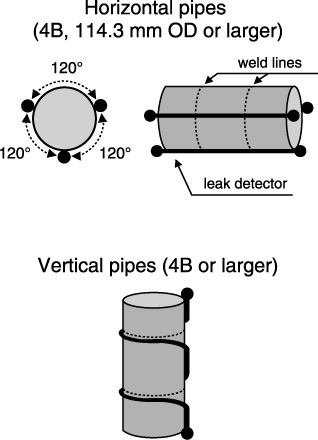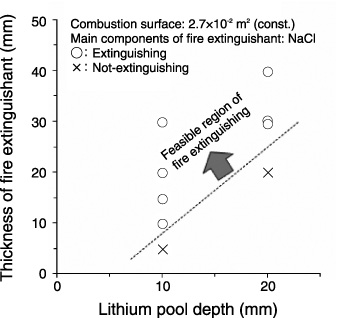
Fig.12-16 The IFMIF/EVEDA lithium test loop (ELTL)

Fig.12-17 Conceptual sketch of the lithium leak detector for pipes

Fig.12-18 Relationship between the lithium pool depth and thickness of the chemical fire extinguishant (Natrex-L) required for fire extinguishing
We are planning a demonstration test of the lithium target system, which is the neutron source for the International Fusion Materials Irradiation Facility (IFMIF). The IFMIF/EVEDA lithium test loop (ELTL)(Fig.12-16) used for the demonstration test is a large-scale equipment, and it consumes a considerable amount of lithium, which has been classified as a flammable element by the fire service law in Japan. Therefore, it is crucial to establish safety measures for the design and construction of the ELTL in case of lithium leakage. The properties of lithium are similar to those of sodium, which is used as a coolant in Japanese fast breeder reactors (FBRs). Hence, observations on the operation of FBRs and the R&D results for the ELTL are useful for establishing safety measures for the ELTL.
Some examples of the safety measures are as follows:
(1) Detection of lithium leaks: The total pipe length of the ELTL is a few hundred meters, and the number of welding points on each pipe is over 500. A contact-type leak detector (CLD) was adopted for detecting lithium leaks in the pipes and main components of the ELTL. The conductivity of a CLD is between the conductivities of lithium and the sensors so that its composition and reliability are stable. The CLDs are arranged at intervals of 120° along the circumference of horizontal pipes and along the welding lines of vertical pipes to facilitate early detection of lithium leaks (Fig.12-17).
(2) Controlling the spreading of the flammable range of lithium: It is known that an intense chemical reaction occurs when lithium comes in contact with concrete, a major component of facilities. Therefore, the concrete floor is covered with a steel liner to prevent lithium from coming into contact with concrete. Moreover, the floor is designed as a reservoir to control the spreading of the lithium leak and the combustion area.
(3) Disposition of the fire extinguishant: It was found that the performance of chemical fire extinguishants composed of sodium chloride was much better than that of fire extinguishants composed of dry sand and pearlite, which were specified in the fire service law by tests. On the other hand, it was found that a portion of the chemical fire extinguishants spread on burning lithium sank into it because of the difference in their specific gravities. Upon investigating the fire extinguishing properties of the chemical fire extinguishants in detail, the relationship between the lithium pool depth and the amount of the chemical fire extinguishant (Natrex-L) required for extinguishing the fire was obtained (Fig.12-18). This knowledge is used to devise the safety measures for the ELTL.
The construction of the ELTL was completed in November 2010. Its basic performance meets the requirements of the demonstration test, which will start in FY 2012.